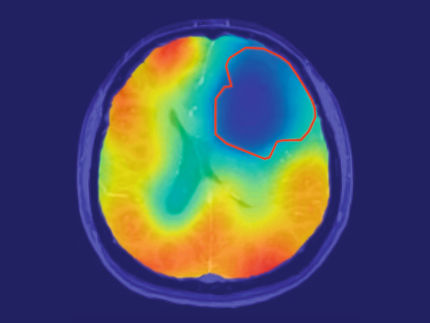Catching the early spread of breast cancer
When cancer spreads from one part of the body to another, it becomes even more deadly. It moves with stealth and can go undetected for months or years. But a new technology that uses "nano-flares" has the potential to catch these lurking, mobilized tumor cells early on.
"We've taken perhaps the world's most important molecule, DNA, rearranged it into a spherical shape and modified it to detect specific molecules inside cells. These structures naturally enter cells and light up when they detect disease-causing molecules," said Chad Mirkin, Ph.D., who is collaborating with C. Shad Thaxton, M.D., Ph.D., to develop the new technology. "We're seeing if we can use nano-flares to create a new type of breast cancer diagnostic, and the early results are remarkable. Nano-flares could completely and radically change how we diagnose breast cancer."
Earlier is better when it comes to cancer detection, but sometimes, by the time a patient notices symptoms and visits a doctor, the first tumor has already spread from its original location in the body to another. It has undergone "metastasis," a state that causes many deaths related to cancer. Cancer took the lives of more than 8 million people worldwide in 2012.
To catch breast cancer — and possibly other types of cancers — earlier, the research groups built upon Mirkin's ongoing program that kicked off in the 1990s with the invention of "spherical nucleic acids" (SNAs). SNAs are usually made out of a gold nanoparticle core covered with densely packed, short strands of DNA.
"We thought that if we could get large amounts of nucleic acids to go inside cells, we could manipulate and measure things inside cells," said Mirkin, of Northwestern University. "Most people said we were wasting our time, but then out of curiosity, we put these particles in cell culture. Not only did we find that they go in, they went in better than any material known to man."
Taking advantage of their ability to enter cells easily, Mirkin's group set out to turn SNAs into a diagnostic tool — the nano-flare. Recently, he and Thaxton designed these particles, which enter circulating healthy and unhealthy cells in blood samples, but light up only inside breast cancer cells.
"Nano-flares can detect just a few cancer cells in a sea of healthy cells," Mirkin said. "That's important because when cancer spreads, only a few cells may break off from the original tumor and go into the bloodstream. An added bonus of these particles is that scientists may be able to sample the live cancerous cells and figure out what therapies they might respond to."
The groups have successfully tested the nano-flares' ability to identify metastatic breast cancer cells in blood samples from animals and are currently experimenting with human samples.
"If the work pans out, a commercial diagnostic test could be available in the near future," Thaxton said.
In addition to diagnostics, it turns out nano-flares can be used to perform other unique and valuable tasks.
"Nano-flares represent the only way to measure genetic content in live cells," Mirkin said. This kind of real-time observation could be useful in many areas of research and could lead to clinical advances. For example, using nano-flares, scientists can see how drugs target different genes. This would help them develop better treatments. One company, Millipore, has already commercialized the particles for use in research labs under the name SmartFlaresTM and offers more than 1,200 variations.
Organizations
Other news from the department science

Get the analytics and lab tech industry in your inbox
By submitting this form you agree that LUMITOS AG will send you the newsletter(s) selected above by email. Your data will not be passed on to third parties. Your data will be stored and processed in accordance with our data protection regulations. LUMITOS may contact you by email for the purpose of advertising or market and opinion surveys. You can revoke your consent at any time without giving reasons to LUMITOS AG, Ernst-Augustin-Str. 2, 12489 Berlin, Germany or by e-mail at revoke@lumitos.com with effect for the future. In addition, each email contains a link to unsubscribe from the corresponding newsletter.






















































